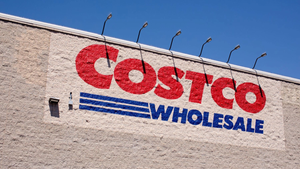Midterm elections will provide regulatory reliefMidterm elections will provide regulatory relief
While the eyes of the nation have been focused on the impact of the mid-term elections on President Obama’s agenda, the Nov. 4 election results also had far-reaching impact on the food and beverage sector.
 While the eyes of the nation have been focused on the impact of the mid-term elections on President Obama’s agenda, the Nov. 4 election results also had far-reaching impact on the food and beverage sector.
While the eyes of the nation have been focused on the impact of the mid-term elections on President Obama’s agenda, the Nov. 4 election results also had far-reaching impact on the food and beverage sector.
The food industry has been on a positive metamorphosis of change since the dawn of the 21st century, providing consumers with the products, tools and information they need to achieve a healthy diet and an active lifestyle. In the midst of this change, the Obama administration has handed down a phalanx of rules, regulations, guidance and private “advice” that has challenged industry innovation and growth, including:
Changes to the Nutrition Facts Panel
Reform of the Generally Recognized as Safe program
Food Safety Modernization Act rulemaking
Exclusions to government feeding programs
Front of pack nutrition labeling deliberations
Advertising restrictions
The food industry generally takes an enlightened view of government intervention, believing public-private collaboration drives consumer trust. However, collaboration has its limits when government proposals are draconian or politically motivated.
With Republican control of both chambers of Congress, the food industry now has a strong “court of appeals” it can turn to to mitigate federal agency proposals that go too far. Hitting the purse strings of federal agencies is a common and successful tactic, along with investigations and oversight powers.
Separately, the Safe and Accurate Food Labeling Act, a bill in the House that would prohibit states and local jurisdictions from enacting genetically modified (GMO) labeling laws, now has an increased chance of success.
In the states, GMO labeling initiatives failed in Oregon and Colorado, making the anti-GMO advocates 0-4 on ballot initiatives to date. Look for more GMO ballot proposals, possibly in Washington State again, in 2016.
In Hawaii, voters in Maui approved a moratorium on GMO crops. Voters in San Francisco rejected a tax on sugary drinks, while voters in Berkeley, Calif., voted to approve a “soda tax.”
In this era of populist policymaking, expect the groundswell of state and local initiatives designed to alter food company behavior to continue. Because the Republican Congress will have some success in mitigating federal agency initiatives, look for non-governmental organizations to shift resources to this type of activity in 2015 and 2016.
Meanwhile, food retailers and manufacturers will continue on their journey to provide consumers with greater transparency about where their food comes from and how it is made, because it’s what consumers want and it’s the right thing to do. Now, they can pursue that agenda while gaining some relief from an ambitious federal regulatory machine that has stifled innovation and growth in recent years.
About the Author
You May Also Like






